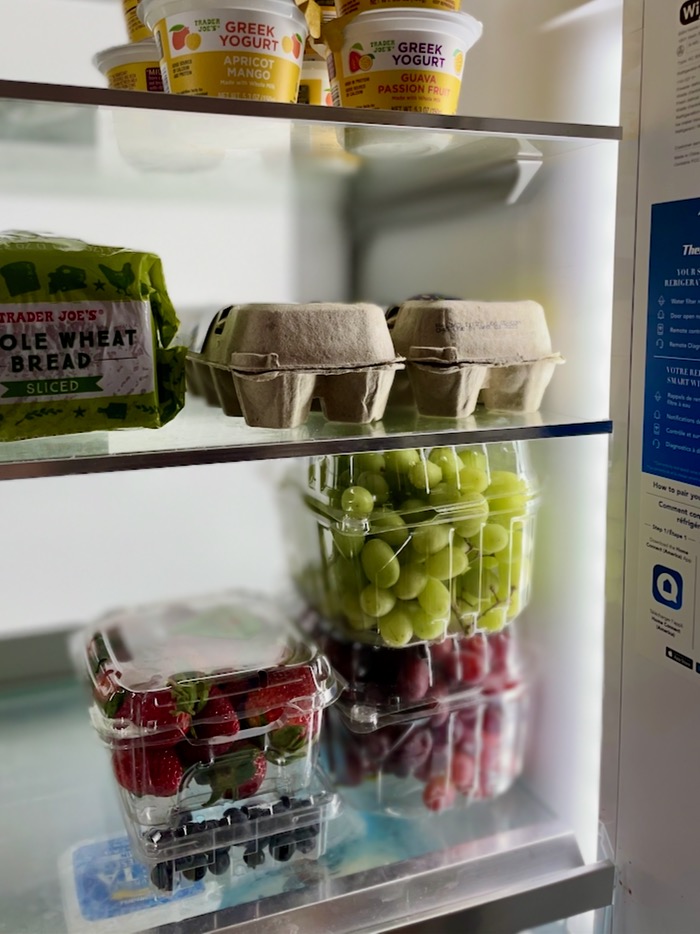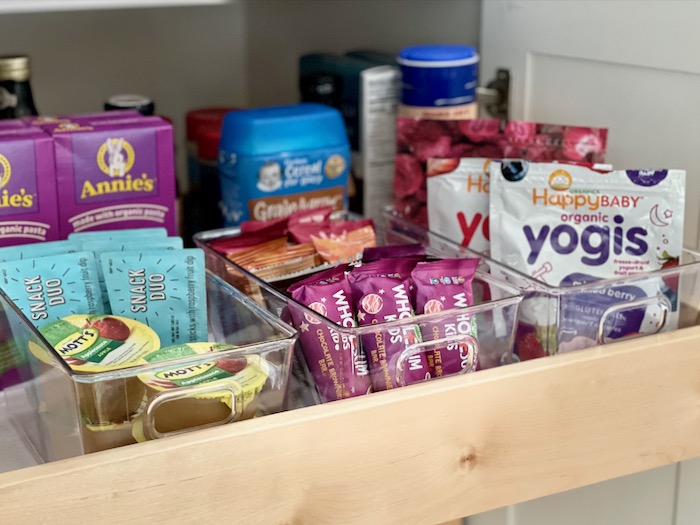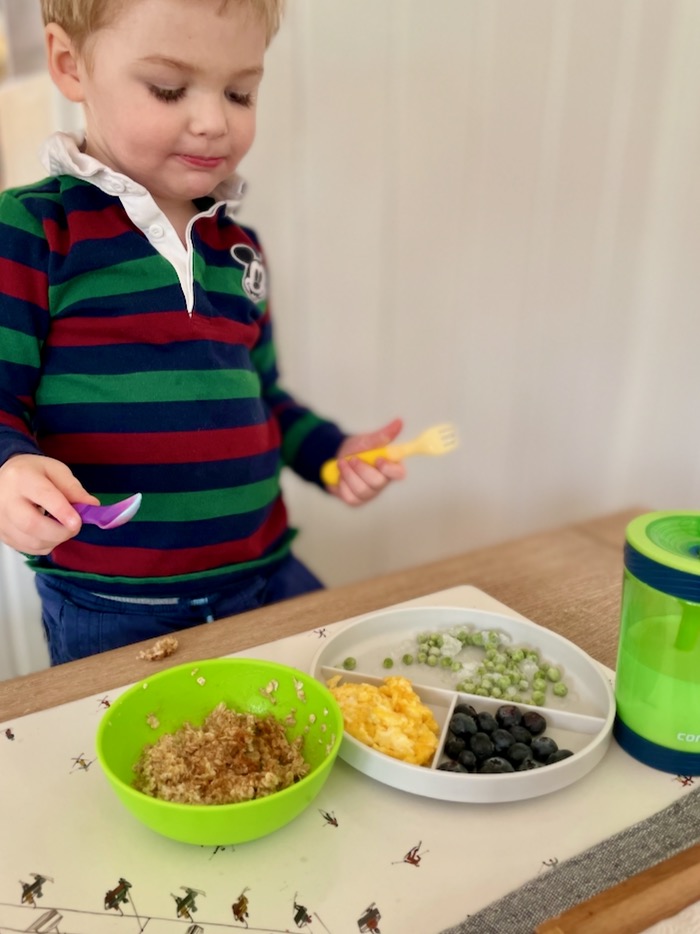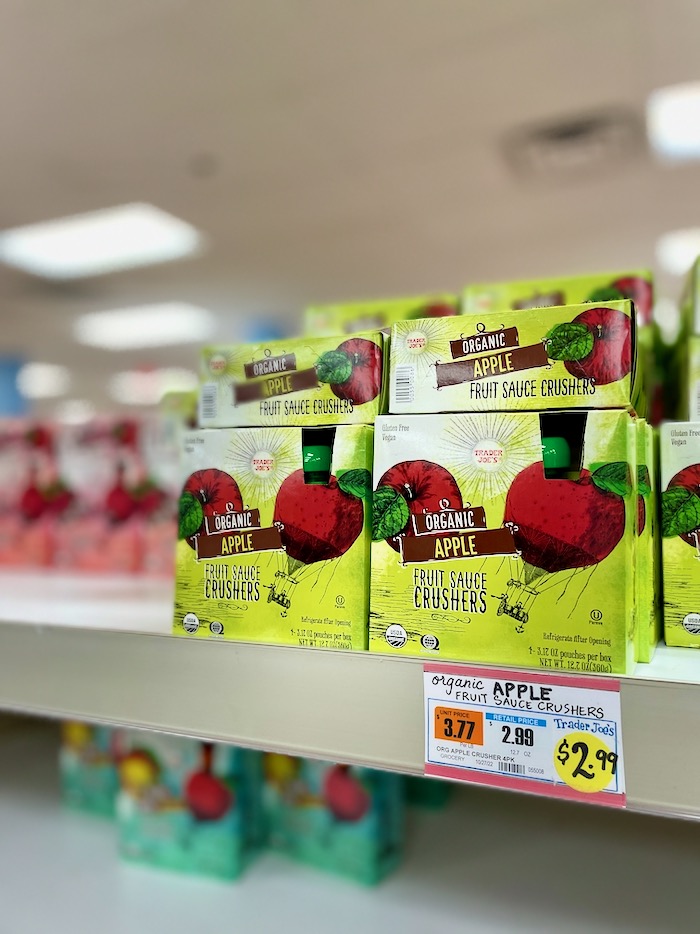30 Healthy Eating Facts for Kids: What Parents Need to Know
After that first six months of life, during which all babies need is breast milk or formula, the tough task of navigating nuanced childhood nutrition begins. As a mom of two and a licensed physician assistant, I’m always looking for clever ways to brighten up our kids’ plates and give them balanced, yummy food to eat.
While we parents are constantly trying to supply healthy nutrients for growing brains and strong bodies, young palates can be ever-changing and limiting. From the picky toddler eater to the busy teenage athlete, here are all the facts you might not know about healthy eating for kids:
Planning Family Meals
Putting meals together for the whole family is no easy task. Here are a few facts about the importance of healthy meals, and some tips for serving up a great plate every time:
1. Family meals matter.

Children who have regular meals with their families reportedly eat fewer unhealthy snacks and consume more fruits and vegetables; they’re also said to be less likely to smoke, drink alcohol, and use other drugs. In any event, involving your child in planning family meals can keep them excited to sit at the table and enjoy recipes together.
2. Kids make great cooks.

Well, maybe not. But it’s still important to get them involved in the cooking process. Preparing food with family helps children investigate new textures and smells, and it creates positive associations with healthy food. Although it involves some serious cleanup afterward — and some imperfectly measured ingredients — cooking together is one of my favorite things to do with our toddler.
3. A rainbow plate is a healthy plate.

Serving fruits and veggies in a variety of colors helps children eat a larger proportion of healthy foods. It also introduces them to foods that vary in their health benefits and nutritional value. Look for produce in red, orange, green, and blue hues to add vibrancy to the family meal. Plus, our son loves when we serve up a variety of colors in a fun pattern on his plate.
4. Grocery shopping when hungry? Not a good idea.

If you’re deciding on family meals for the week, try not to go to the store when you’re hungry. Grocery shopping on an empty stomach can lead to food waste or unnecessary consumption of unhealthy products. Instead, make a detailed meal plan and eat a robust snack before heading to the grocery store with your children.
5. It’s best to ditch the frying pan.

Even if the ingredients are healthy, children gain fewer nutritional benefits from foods that are fried. If you’re preparing dinner for your family, try broiling, steaming, or grilling the foods you eat instead. Our son loves to put on his apron and watch his dad put yummy eats on the grill outside.
6. Budget-friendly protein options do exist.

Trying to stick to a budget while keeping a healthy family meal plan? Switching out your protein sources a couple nights a week from chicken and fish to beans, eggs, and tofu can help reduce the grocery bill.
Choosing the Right Foods for Child Development
Children are growing every day, and their nutritional needs are high. Let’s review some basic concepts for providing them with good food sources and meeting their nutrient demands:
7. Children need lots of fruits and veggies.

Fruits and vegetables should make up a whopping half of kids’ plates at every meal. Filling up on healthy food groups limits the intake of sweets and provides children with nutrients that help their brains and bodies grow. We love to add leafy greens into our son’s diet by blending them with frozen fruit and yogurt in a tasty smoothie.
8. Little ones are more likely to eat what’s at eye level.

If you want your child to opt for healthier snacks, put ready-to-eat fruits and veggies at your son or daughter’s eye level in the fridge or pantry. I love to store apples in the low refrigerator drawer that our son can reach.
9. Kids need protein.

Protein is important for the development of muscle, hair, skin, and bone, and it helps important components in our blood. Until age 9, children usually get a large proportion of their protein needs from milk. Other easy-to-find sources of protein for kids include eggs, yogurt, beans, nut butter, hummus, oatmeal, veggies, and whole wheat pasta.
10. Children are building bones for life.

An importance purpose of a child’s healthy diet is to build a healthy bone framework that lasts through adulthood. Developing a strong skeleton in youth reduces the risk of osteoporosis — a disease where bones are prone to breaking — later in life. To maintain solid bone health in your child, encourage regular exercise and a diet with plenty of calcium and vitamin D.
11. Babies need a variety of textures.

If you’re feeding an infant or a young toddler, make sure you’re introducing a mix of tastes and textures into their diet. Babies need exposure to a variety of consistencies to develop fine motor skills, learn proper chewing, and encourage food acceptance.
12. About 90% of children eat too much sodium.

High sodium intake is linked to high blood pressure, which affects about one out of six children and contributes to heart disease. Common sources of high sodium for kids include pizza, bread, sandwiches, deli meat, chips, and cheese.
13. Athletes need replenishment.

Kids who participate in endurance sports like swimming, rowing, or running may need more nutrients and fluids than others. On game days, experts recommend an easy-to-digest meal a few hours before the starting whistle. To rebuild muscle and replenish energy and fluids, athletes should eat 30 minutes after competing, and again two hours later.
Feeding Picky Eaters
Unlike an infant who’s just starting solids and willing to try anything, toddlers can be resistant to accepting the day’s meal plan. Let’s review some helpful facts about feeding that adorable preschooler with a limited palate:
14. Picky eating phases are normal.

It’s normal for preschool-age children to go through a phase where they want the same few foods on repeat. Although it can be a difficult period for parents, most children will grow out of their picky eating phase and adopt a more varied diet as they get older.
15. The more you serve new food, the more likely it is that your toddler will eat it.

It can take ten tries or more for babies and children to adopt a new food. Even if they refuse it, put it on their plate day after day, and encourage them to take at least one bite.
16. Kids love dips!

Little ones might be more likely to eat fruits, vegetables, and meats if they have a fun and tasty dip to eat with it. Try yogurt, hummus, or ketchup — a must for our son’s chicken nuggets.
17. Kids’ palates mimic their parents’ palates.

One study demonstrated that moms who show resistance to trying new food are more likely to have kids who refuse new foods. If you have an open mind about new flavors, kids will catch on and follow your lead.
18. Activity boosts appetite.

If you’re having a tough time getting your child to eat during meals, try getting active together beforehand by going for a walk. Just 30 minutes of activity before dinner can reduce picky eating habits and improve food intake.
19. Food rewards can reinforce picky eating.

Using food as a reward is an appealing way to highlight your children’s great behavior, but it can also attract them to empty-calorie products, raise their interest in eating when they aren’t hungry, and lead to picky eating later on. One study even showed that children who regularly received food rewards at age 4 were more likely to be picky eaters at age 9.
Relating Food and Behavior
You might think of food as just a necessary means to meeting nutritional needs, but children develop strong psychological ties between food and behavior. Let’s look closer at the way our kids’ emotions affect how they eat, and how their food intake and eating habits affect their attitudes:
20. Breakfast encourages success at school.

Eating a balanced breakfast drives up metabolism, improves focus, and boosts energy throughout the day. Kids who eat breakfast are more likely to perform well at school and less likely to become overweight.
21. A snacking child isn’t always hungry.

A variety of emotions, including boredom, stress, insecurity, fatigue, anger, and even depression, can leave kids wanting to graze all day. Talk to your son or daughter about their feelings. Make sure they’re offered three square meals a day, and nudge them toward a more active alternative to snacking if they’re bored. Throwing an impromptu family dance party in the living room is one of our favorite go-to activities to get the blood pumping.
22. Parents’ food behaviors become children’s food behaviors.

Like it or not, kids mimic all sorts of attitudes from their parents. You can encourage good food regulation in your youngsters by serving yourself appropriate portions, talking about feeling full, and eating a variety of food groups.
23. Screens contribute to mindless munching.

Having the tablet or television running during mealtimes can cause overeating in children. Instead, sit down with your child intentionally. Encourage them to focus on the food in front of them, which will limit their intake to an appropriate volume and help them stop eating once they’re full.
24. The clean-plate club is out.

A common practice used to be encouraging children to finish everything on their plate, at every meal. Pediatric experts, however, have found that this parenting style can psychologically reinforce overeating and instill poor food habits in kids.
25. Mindfulness makes eating purposeful.

Mindfulness is having an awareness of your senses, thoughts, and feelings in their relationship to the environment. Mindful practices in connection to eating can prevent children from snacking out of habit, teach them to realize when they are full, and reduce excess weight gain. Asking your son or daughter how hungry they are before a meal or encouraging them to place the fork down between bites are a couple ways to establish mindful eating practices.
Navigating Drinks and Supplements
As children grow older, the calories and nutritional value that they get from fluids only become more important. Here are a few helpful insights for negotiating healthy and unhealthy drink choices:
26. Hydration is paramount.

Good hydration can improve children’s cognitive function, which enhances their learning capabilities and betters school performance. It also helps kids maintain adequate energy and recover from illness.
27. Kids drink a lot of juice, but they don’t need to.

Juice is high in sugar, rich in calories, and lacking the healthy fiber kids get from real fruit. Even so, sugar-sweetened beverages account for 10% of children’s total caloric intake. Water and milk are much better alternatives for hydration. Try infusing water with berries or offering your child a fun and fancy cup to help keep them interested.
28. Energy drinks are unnecessary.

Although popular in schools, energy drinks are loaded with caffeine and added sugars that have no place in a child’s diet. Energy drinks contribute to dehydration, heart complications, anxiety, and insomnia, and they cause an array of pediatric health emergencies. Opt for water or milk instead.
29. Children shouldn’t take sports supplements unless approved by a physician.

Some teens mix supplements into milkshakes to build endurance and muscle, but there are no studies to determine their long-term effects in youth. Parents should be aware that sports supplements don’t require FDA approval before going to market, and they can include additives not listed on the label.
30. Pediatric caffeine intake is associated with tobacco and alcohol use.

Caffeine alone has a variety of negative effects, including anxiety and heart issues, but it can also contribute to other unwanted behaviors and substance use in children. If your child is used to heavy caffeine consumption, work with their doctor to cut back slowly and avoid withdrawal symptoms such as headaches.
***
There’s no doubt that navigating childhood nutrition is hard. Kids’ eating habits seem to be changing all the time, and it can be difficult to balance their preferences with the nutrition they need to remain strong. To help your child stay healthy, try to demonstrate the eating behaviors you’d like them to adopt, sit down to enjoy meals together as a family, and don’t hesitate to reach out to the pediatrician if you have any concerns about your youngster’s nutrition.







